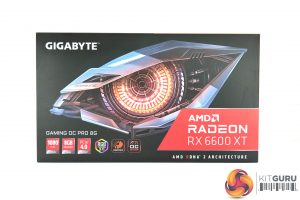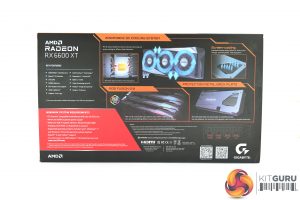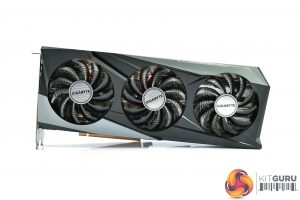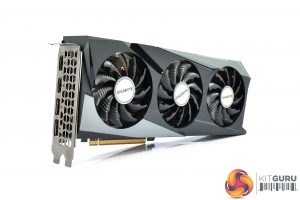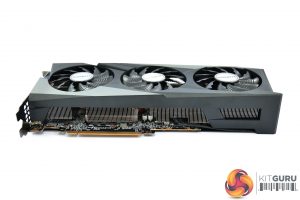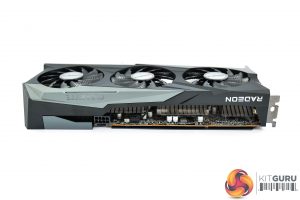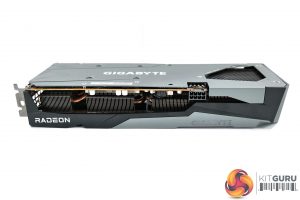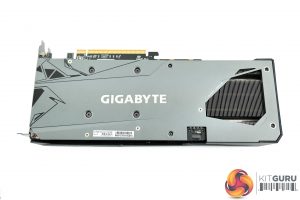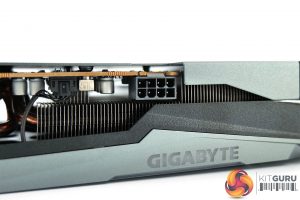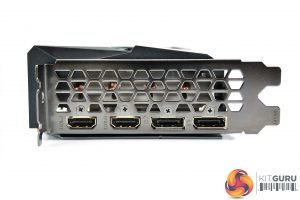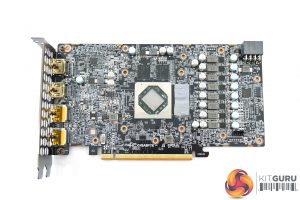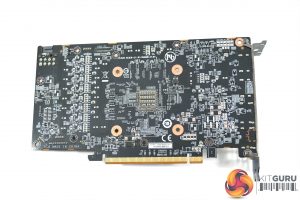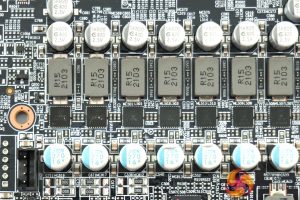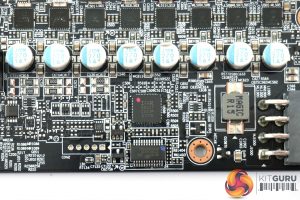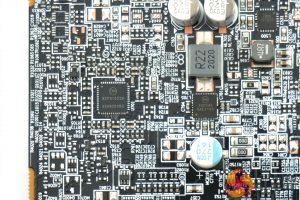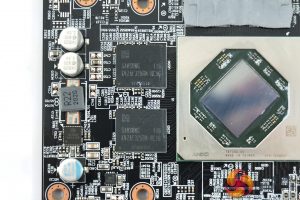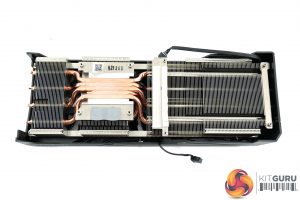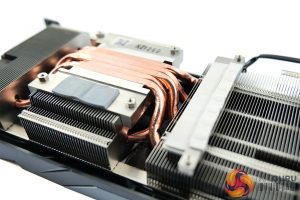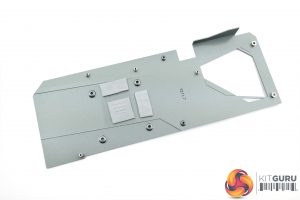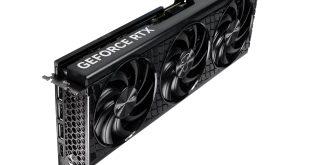The Gigabyte RX 6600 XT Gaming OC Pro 8G ships in a familiar-looking box, with Gigabyte's robotic eye logo dominating the front. On the back, the company highlights a few key features, including the fan layout, direct heatpipe contact and ‘Screen Cooling.'
Inside, we find a single piece of documentation – a quick start guide.
As for the card itself, we've reviewed plenty of Gaming OC cards from Gigabyte this GPU generation, and the 6600 XT Gaming OC Pro is very much part of the family. That means Gigabyte is using its tried-and-trusted black and grey plastic shroud, with a total of three 80mm fans. As always, the central fan spins in reverse, relative to the outer two, which Gigabyte claims helps to reduce overall turbulence, and thus increase airflow pressure down onto the heatsink itself.
For a 6600 XT, we'd expect this card to be one of the bigger models considering the fairly low 160W total board power (TBP) rating – the Gaming OC Pro measures 282 x 115 x 50mm. It should still fit in most cases on the market, but it's not exactly a dinky single-fan, dual-slot solution.
Gigabyte has also stuck with a plain metal backplate, though it does feature a large cut-out which the company calls ‘Screen Cooling.' It's simply a way to getting air coming in from the fans, directly though the heatsink, and out of the back of the card.
We'd expect most RX 6600 XTs to require a single 8-pin connector, and that is exactly what we have here with the Gaming OC Pro. Display outputs consist of 2x HDMI 2.1 and 2x DisplayPort 1.4.
Looking now at the card's PCB, this is the only RX 6600 XT card we have looked at for launch so it's hard to say exactly how ‘custom' this PCB is, or will be, compared to the other boards which hit the market.
Still, we can identify the core layout, with an 8-phase VRM for the GPU and a 2-phase solution for the memory. The GPU VRM makes use of OnSemi's 302045 and 302051 MOSFETs, with 302045 MOSFETs used for the memory. The GPU VRM is controlled by International Rectifier's IR35217, while the memory VRM uses OnSemi's NCP81022N controller.
As for the VRAM itself, there are only four modules on the PCB – Samsung's K4ZAF325BM-HC16. We can also note the very small Navi 23 die, measuring just 237 mm².
The cooler, meanwhile, looks rather sophisticated for a GPU with just a 160W power rating – Gigabyte is using three finstacks connected by a total of 5x6mm heatpipes. The heatpipes make direct contact with the GPU die, as do two of the memory modules (via a thermal pad), while the other two modules contact with a separate plate. We can also note another aluminium plate used to contact the VRM.
Lastly, it's good to see Gigabyte using three thermal pads on the underside of the backplate to contact the back of the PCB. This doesn't make a massive difference, but it will help draw at least some heat from the PCB and spread it over the metal backplate.
 KitGuru KitGuru.net – Tech News | Hardware News | Hardware Reviews | IOS | Mobile | Gaming | Graphics Cards
KitGuru KitGuru.net – Tech News | Hardware News | Hardware Reviews | IOS | Mobile | Gaming | Graphics Cards


